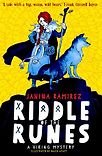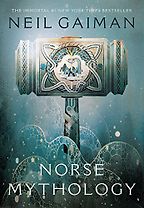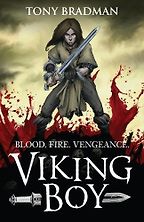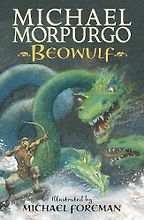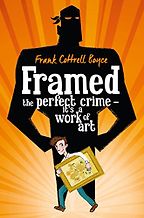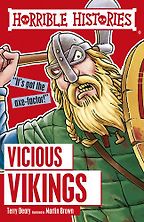How did you become a history lover?
I’ve been fascinated by the past since I fell in love with the atmosphere of ancient buildings aged seven during a trip to Hampton Court Palace. But I think I have a different relationship with history as a subject. I do like dates and information, but became really engaged with the imaginative world of individuals from the past. I was intrigued by why people created myths and stories and artworks, why they associated individuals and events with specific landscapes, and why so much of their earthly existence was affected by belief in supernatural or religious settings. The minds of people from the past interested me more than their actions or reputations.
You are well-known for your scholarly works of nonfiction – The Private Lives of Saints (2015) and Julian of Norwich: A Brief History (2016). Riddle of the Runes is your first book for children and your first foray into fiction. Did the needs of historic accuracy and narrative ever clash?
They don’t have to clash, particularly when writing about the Early Medieval world. There is fragmentary evidence surviving from this period, so writing fiction based in the Viking world by its very nature allows me to craft individual characters from scratch and create exciting narratives that need not clash with historical fact. But I am an absolute stickler for accuracy. If I know a fact or an object or an event that would tie in with my narrative then I try not to manipulate it. In my historical investigations over the years I have found evidence that is often so interesting or exciting it couldn’t be imagined in the mind of a writer of fiction. I use this evidence as the foundations of my imaginary world.
Was it important to you to have a female lead? If so, why?
I didn’t have to actually think about whether my main character was male or female. Alva was so fully formed in my head from the moment I started writing that her gender was never something I considered. For me, the really exciting stories I’ve uncovered from the medieval period revolve around women. I have been fascinated by the way Viking societies allowed women rights and powers, celebrated them within society, and included them in their religious framework.
“For me, the really exciting stories I’ve uncovered from the medieval period revolve around women”
What’s more, I think you have to write what you know. I have grown up an empowered and strong woman and I wanted a lead character that would encourage others to feel that way. Alva is the character I wish I’d read about when I was growing up.
Why do you think it is important for children to learn about stories and events that took place more than 1000 years ago?
There are so many answers to this. Firstly, as a cultural historian I believe we only understand where we are and where we are going by understanding where we have come from. To live purely in the present is to ignore the wisdom and experience of greater minds that have gone before us. Secondly, the history of the Vikings is our history. Here in the British Isles we often forget that over half the country was ruled by Vikings for centuries. We had a King of Denmark and of England: Cnut.
“To live purely in the present is to ignore the wisdom and experience of greater minds that have gone before us”
Yet this part of our heritage is ignored and we start our history with 1066 and the Normans (who, incidentally, were ‘Norse-men’, i.e. Vikings). Finally, what is the point of reading any fiction other than to gain insights into the human condition? Why do certain stories captivate and transport readers? Because alongside learning about the mechanics of life, the universe, everything, we are constantly searching to understand the microcosmic and infinitely complex world that plays out inside every individual’s mind. To me, that is endlessly fascinating.
Let’s look at your book choices. Your first choice is Norse Mythology by Neil Gaiman. Tell me about this book.
An obvious choice for me, but truly a staggeringly important book for anyone interested in the myths of the Vikings. I have studied all these texts in the original Old Norse, but Gaiman has done something superb with them: he was woven them into compelling narratives for a Marvel-book comic-loving generation, who can find fun, drama and excitement in these thousand year old stories.
“A staggeringly important book for anyone interested in the myths of the Vikings”
Neil is a personal friend and has been a huge support with the launch of Riddle of the Runes. We share a fascination with the imaginative world of the Vikings. My kids have also adored listening to this on audiobook – his voice is so calming, while the adventures are so wacky!
Your second book is Viking Boy by Tony Bradman
This can be read as a counter to Riddle of the Runes. While I went for historical context and a compelling mystery with a female lead, Bradman has more fantasy/supernatural elements and a male protagonist.
Sign up here for our newsletter featuring the best children’s
and young adult books, as recommended by authors, teachers, librarians and,
of course, kids.
But it is couched in excellent research on the period and brings the Viking world to life in a vivid and dramatic way.
You third book is Michael Morpurgo‘s retelling of Beowulf. Beowulf was a kind of Anglo-Saxon superhero and his story is probably the oldest surviving story in English.
This child’s laureate knows how to tell a tale for children. I’ve been obsessed with the original Beowulf and have poured over every line for nearly two decades. But Morpurgo manages to maintain the magic, monsters and military might of the original, while creating a story that modern day children can connect with.
“ This book will bring many new young readers to the original English epic”
Despite being a serious Anglo-Saxon scholar, I am passionate about sharing and communicating the things I love with wider audiences. This book manages that beautifully and will bring many new young readers to the original English epic.
Your fourth choice is Framed by Frank Cottrell-Boyce. Not a Viking history book, but it relates history to younger readers in a way that is important to you.
As well as an Anglo-Saxonist, I’m also an art historian. The subject can sometimes be held at a distance for children, but the wonderful Cottrell-Boyce breaks down that divide in this brilliant book. Frank is a fabulous man, with a kind heart, who has helped me no end.
“This excellent story allows children to connect with the beauty and significance of art”
That he writes incredibly well for children just makes me love him all the more. Framed returns to historical accounts of masterpieces stored in Welsh mines as the source for inspiration for this excellent story, and it allows children to connect with the beauty and significance of art.
Can you tell me more about what this means to you?
While bodies, spirits, voices of individuals die and decay, the artworks they leave behind are traces that can still speak to us across the centuries. When an artist sits in front of a canvas and paints they are leaving behind a wealth of information about the time they live in and the person they are for later generations to decode. Art is as rewarding as literature for revealing insights into lost imaginations, but the fact that it involves all our senses, and is a physical object that has beaten the tides of time and survived while the individuals that made it have long perished, to me that makes art works actual witnesses of the past. What could be more exciting than having a chat with someone from history? Art allows us to do that!
And, finally, you have chosen The Vicious Vikings from the Horrible Histories series.
I wouldn’t be doing my job if I didn’t give special mention to the Horrible Histories books. These short, accessible, illustrated wonders have exposed my children to characters from across history and the world. The Vikings book is especially good since it plays on the myths surrounding these ‘vicious’ barbarians, while exposing readers to the complex and fascinating world of travel, trade and tradition that underline these misconceptions. Laugh out loud funny at times, I salute the Horrible Histories team for all they have done for this upcoming generation of history lovers.
Interview by Zoe Greaves
August 8, 2018. Updated: October 3, 2023
Five Books aims to keep its book recommendations and interviews up to date. If you are the interviewee and would like to update your choice of books (or even just what you say about them) please email us at [email protected]
Five Books interviews are expensive to produce. If you've enjoyed this interview, please support us by donating a small amount.

